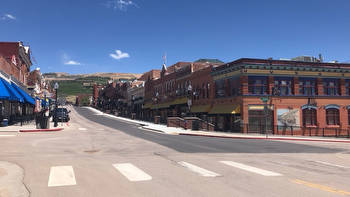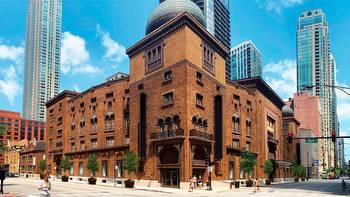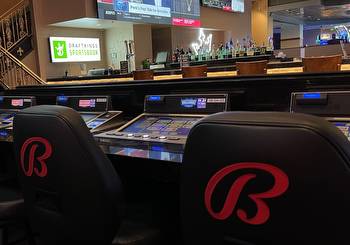Cripple Creek Casino Sign Wars Flare Up!

Council Denies Historic Preservation Designation; Fears Lost of Landmark Status
Rick Langenberg
It was a case of Déjà vu in the Cripple Creek City Council Chambers last week in a hearing that drew comparisons to the early years of limited stakes gaming, when historic preservation decisions almost turned into near fist fights.
In what some describe as the “Wild West Days,” Cripple Creek casino architects, developers and even citizens often clashed with preservation and city officials in heated, marathon sessions in the early 1990s, as renderings of historic buildings becoming the lead standard at all costs for current and future projects. Those earlier memories were rekindled on April 5 during a rare, tumultuous council session.
The good news: No casualties or injuries occurred, following the latest sign showdown that resulted in the overturning of a previous recommendation by the historic preservation commission. The bad news: Bruised egos definitely ensued as the city council made it clear that 1950s-style art deco displays don’t belong in the downtown district. City officials say that even with the ongoing hotel construction boom, the town must retain its historic character in maintaining the period of significance that peaked in the post-mining, Victorian era from 1896 to 1910.
At issue was a new bold, 240-square-foot, electronic sign display proposed by Century casino that introduced a more colorful, art deco look to the main street, and one that would try to compete with pending signs possibly prepared by the massive Chamonix resort. There is no question that this display would make Century stand out more.
“We think the sign looks fantastic,” said Eric Rose, the general manager of Century Casino Cripple Creek. “It is not going to take away from the historic character.”
In addition, he noted that the historic preservation commission approved their design at an earlier meeting, with no significant concerns.
Plus, Rose argued that the historic character of this part of town is bound to change, with the new Chamonix project, a nine-story hotel, parking garage and addition for Bronco Billy’s.
The casino’s sign consultants also contended that art deco was a feature of the 1910 period. They also cited a few 1950s-style signs already approved in the town. “We want to make sure Century is seen,” said a representative of the sign company, DaVinci Sign Systems.
DaVinci representatives also noted that the economic impacts need to come into play, and the city shouldn’t take action that would endanger the probable success of the Century casino. They argued in favor of a fair playing field, claiming that the city has given Bronco Billy’s an unfair advantage in the doing a project that clashes with current preservation standards.
We Are a Historic town
But these arguments didn’t get a warm response from city officials and the council. In the staff report, Renee Mueller, the city’s planning and historic preservation coordinator, feared a pending sign war if the display was approved. She quoted comments made by Century representatives to the tune of ‘I’ve seen the bids for Full House. If you think this is big, I think it’s miniscule compared to what Full House will do with their hotel entrance.’ “This is exactly the point,” responded Mueller. “The approval of this non-conforming design could start the race to who can have the biggest and brightest sign on Bennett Ave., ignoring the fact that there is a strict criterion for the historic district in the B (business) zone.”
At last week’s hearing, Mueller went further and noted that the city could lose its historic landmark status, if it allowed huge electronic signs that didn’t adhere to Cripple Creek’s period of historic significance. “I think we made a mistake,” blasted Mueller, in describing the March meeting in which the preservation commission gave the okay for a certificate of appropriate designation for the new sign display. Mueller explained that she couldn’t attend the meeting and contended that the Zoom connection was difficult, so her denial recommendations were not truly understood.
Her lengthy presentation, via Zoom at last week’s council meeting, was eventually cut short by City Administrator Frank Salvato.
In their deliberations, the council clearly sided with the concerns raised by Mueller, and noted that the non-conforming signs cited by Century were approved well before gaming. “We are in a historic district and I want to keep it that way,” said Councilman Tom Litherland
“I don’t want to get into a sign war,” said Mayor Pro Tem Melissa Trenary. She and other council members feared the loss of the town’s national landmark status, if it opened the door for more modern, signs that clashed with the town’s historic character. Trenary urged Century to explore a different design that blended in better with the town’s historic look.
But Rose countered that times have changed with the arrival of a mega resort. “It is important to allow some new signs. This is growth,” said Rose.
Councilman Bruce Brown, who served as the previous mayor for 10-plus years, believes that new sign displays need to be examined on a case-by-case basis. He also stressed that the non-conforming signs, cited by the consultants for Century, were installed before the city enacted an official historic preservation ordinance.
Councilman Jared Bowman cited the importance of adhering to standards of the town’s national historic landmark status. “We shouldn’t risk that.”
The council’s move to deny the pro-sign display recommendation by the historic preservation commission was approved unanimously.
But all is not lost for Century casino in their current sign battle. The elected leaders indicated they didn’t have a problem with the size of the sign, and their objections dealt with the design. If the Century casino representatives plan to revisit this issue, they would just need to get the approval of a new design and seek a variance for the sign installation.
































